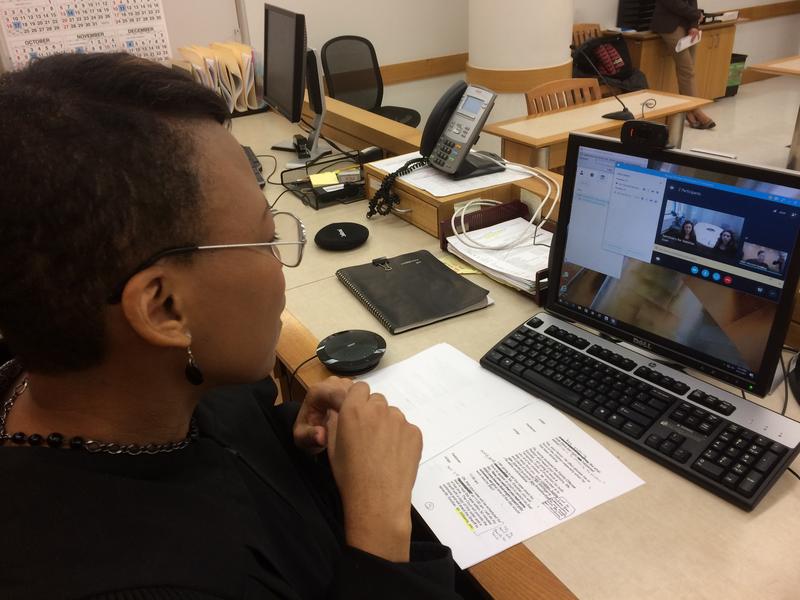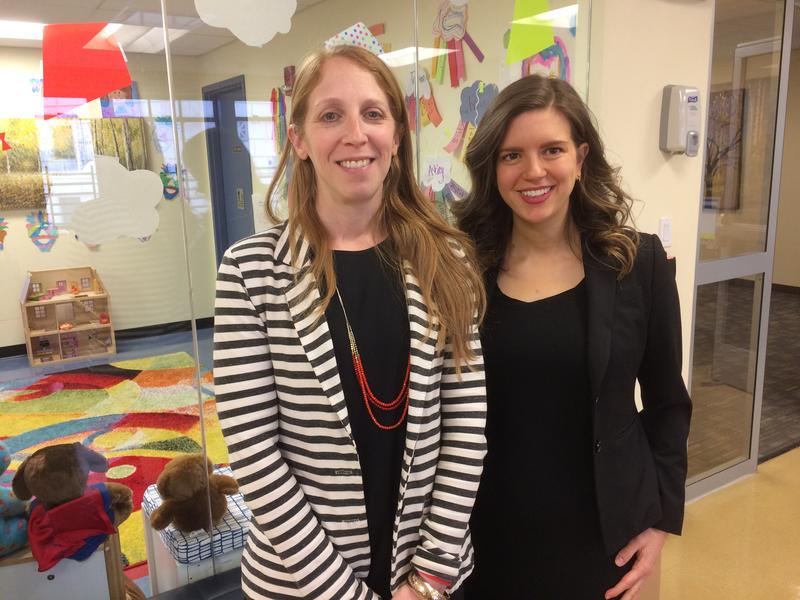
A victim seeking an order of protection from an abusive partner no longer needs to travel to a courthouse and wait to file paperwork and see a judge. In seven New York counties, including Westchester and Manhattan, litigants can now file their petitions electronically and see a judge via Skype within an hour, with help from specially-trained advocates.
Manhattan Family Court Judge J. Machelle Sweeting has seen several cases since the pilot program began in early March. She recently showed WNYC how the system works by conducting a simulated electronic hearing with advocates from Sanctuary for Families.
"Can everyone see me and hear me clearly?" Sweeting asked the two women playing a litigant and her attorney, visible on her laptop screen. "Yes, your honor," they answered through the speaker.
The pretend litigant was a woman seeking an order of protection from her husband. After being sworn in by a court officer, Sweeting asked the reason why she was unable to come to court in person. The woman answered that she was afraid her husband would hurt her and take away her children if she told the police or went to court.
This met the criteria for allowing the hearing to continue. Sweeting said it's no different than seeing someone in person. "I’m able to make determinations concerning character, the integrity, credibility," she said. "All of these things I’m able to assess via seeing them on the computer screen.
The program will eventually go statewide, making New York the first in the nation with such an extensive system for seeing judges remotely.
Not just anyone can use it, though. Litigants need to appear with trained advocates who have a secure email account with the court system. Manhattan Family Court partnered with Sanctuary for Families, which has a location in the Family Justice Center a few blocks away from the court. Attorney Alison Attanasio said she’s worked with three women in this downtown office who were too afraid to make the short trip to court.
"Some of these clients that I worked with were very hesitant to get an order of protection," she recalled, including one who was injured. "When I explained to them that we could do it right now and you could see the judge this afternoon, we wouldn’t have to leave the building, you could see the tension ease and their fears ease."
The temporary order of protection is just the first step in a domestic violence case. Attanasio said she wishes all subsequent hearings could take place remotely, because victims are often terrified of seeing their abusers in court. But state law only allows remote proceedings for litigants seeking a temporary order of protection in family court. The 2015 legislation built upon an access-to-justice initiative that already allowed trained advocates to help thousands of litigants file petitions for an order of protection electronically.
Deborah Kaplan, the statewide coordinating judge for family violence cases, said the Skype program can be used in multiple ways. In Rochester, the advocacy group that’s trained to use remote access works with people who are especially vulnerable.
"Advocates are actually stationed at the hospital," she said. "So that includes geriatric care, that includes the emergency room, OBGYN, any place where you find someone who the social worker in the hospital would speak to and believe there’s a need for an order of protection."
Kaplan said trained advocates can also work with victims in shelters and libraries, or even police precincts.
Statewide, more than 300,000 temporary orders of protection were granted last year.

